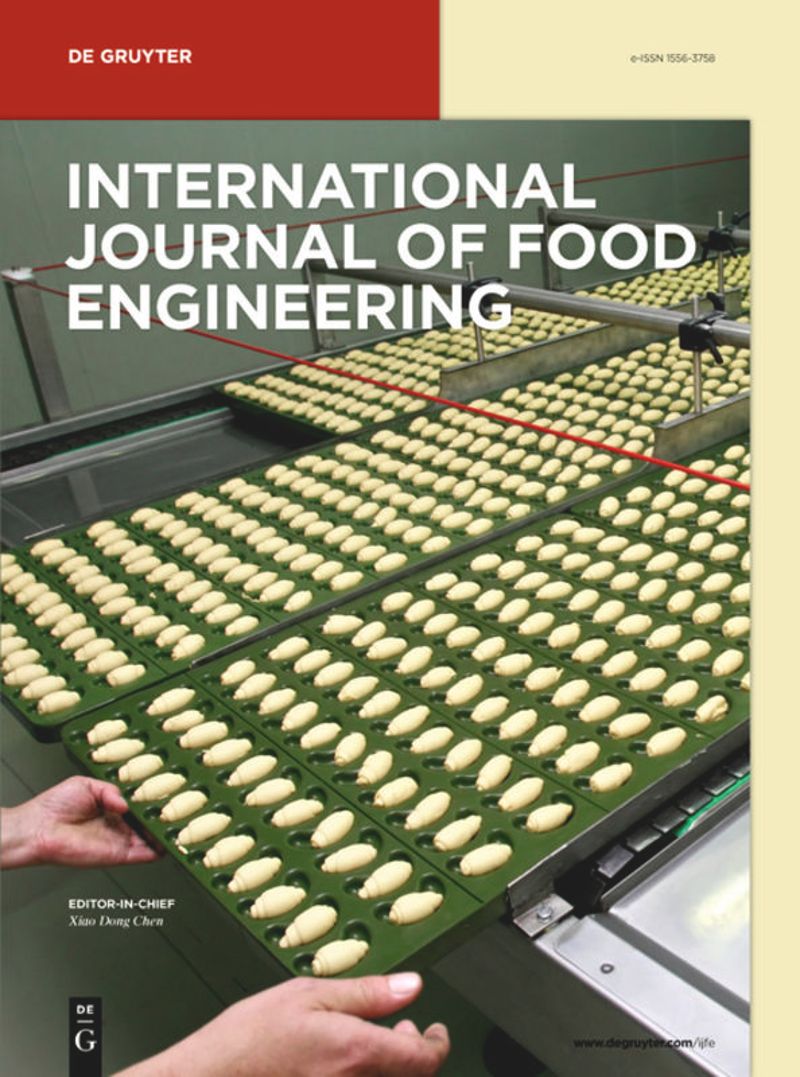块茎切片折射窗口干燥的定量审查和机器学习应用
IF 1.4
4区 农林科学
引用次数: 0
摘要
摘要 折射窗干燥(RWD)是一种首选的干燥技术,因为它适用于热敏性产品。虽然这种干燥技术看起来很有前景,但在很大程度上还未得到开发。在本研究中,作者利用 2000 年至今的 40 篇文章样本,对现有的 RWD 阶段性成果进行了回顾,以量化多项研究的调查状况,并确定需要进一步关注的具体领域。结果显示,实验分析约占报告案例的 53-59%,其次是文献综述,占 24-28%。此外,在所有建模类别中,机器学习(ML)技术仅占研究案例总数的 8%。在这一结果的推动下,本研究采用了三种 ML 技术来模拟 1.5-4.5 毫米厚的山药切片的水分比 (MR),并在 RWD 室的 65-95 °C 温度范围内进行操作。与常规程序不同的是,研究了山药厚度和气温对水分比的影响,以确定更重要的因素以及气流速度对水分比的影响或不影响。为了研究整个数据集的有效性窗口,考虑了所有数据点,每种情况下的训练测试比例为 7:3。在方案一中,基于山药厚度效应的预测对磁共振的影响更大。与忽略气流速度的情况(即本研究中的对照情况)相比,0.5-1.5 m/s 的气流速度对 MR 的影响很小。此外,所有测试样本的模型精确度均优于 93%。这项研究的启示将为今后设计 RW 干燥机提供指导,以便在各种条件下直接测量收获块根的水分比。本文章由计算机程序翻译,如有差异,请以英文原文为准。
Quantitative review and machine learning application of refractance window drying of tuber slices
Abstract Refractance window drying (RWD) is a preferred drying technique due to its suitability for heat-sensitive products. Although this drying technique appears promising, it is yet largely unexplored. In this study, the authors provide a review of the existing milestones on RWD using a sample of 40 articles from 2000 to date to quantify the state of investigations across multiple studies and establish specific areas needing further attention. Results show that experimental analyses constitute about 53–59 % of the reported cases, followed by a literature review 24–28 %. Furthermore, 17 % of the total study cases was observed across all modelling categories, with machine learning (ML) techniques constituting only about 8 %. Driven by the outcome, this study thus utilized three ML techniques to model the moisture ratio (MR) of 1.5–4.5 mm thick yam slices, operated over the range of 65–95 °C temperature in an RWD chamber. Unlike the routine procedures, the yam thickness versus air temperature effects on moisture ratio were investigated to determine the more significant factor as well as the air velocity effect or its lack thereof on MR. To investigate the validity window for the entire dataset, all data points were considered, with a training-testing ratio of 7:3 used in each case. For scenario one, prediction based on the yam thickness effect showed a greater influence on the MR. The air velocities at 0.5–1.5 m/s had little effect on MR as compared to the case where air velocity was ignored (i.e., the control case in this study). Also, model accuracy for all tested samples has been determined to be better than 93 %. Insight from this study is to guide in the future design of RW dryers for direct measurement of the moisture ratio of harvested root tubers at various conditions.
求助全文
通过发布文献求助,成功后即可免费获取论文全文。
去求助
来源期刊
CiteScore
3.20
自引率
0.00%
发文量
52
审稿时长
3.8 months
期刊介绍:
International Journal of Food Engineering is devoted to engineering disciplines related to processing foods. The areas of interest include heat, mass transfer and fluid flow in food processing; food microstructure development and characterization; application of artificial intelligence in food engineering research and in industry; food biotechnology; and mathematical modeling and software development for food processing purposes. Authors and editors come from top engineering programs around the world: the U.S., Canada, the U.K., and Western Europe, but also South America, Asia, Africa, and the Middle East.

 求助内容:
求助内容: 应助结果提醒方式:
应助结果提醒方式:


